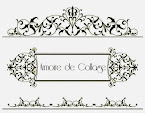Folk art was the early predecessor of the decorative arts market. In contrast to fine art, folk art is primarily utilitarian as well as decorative; its purpose goes beyond being just aesthetic. Other terms used to describe folk art are ‘self-taught’ or ‘working class’ art, and more definitive…pop art, primitive and tribal art. By whatever name, unique one-of-a-kind items have been, and will always be, popular as conversation pieces and to provide a focal point to a room.
Some geographical areas will soon be experiencing an increase in the demand for decorative pieces. The new Exxon Mobil campus south of The Woodlands, Texas, brings with it. housing developments of new homes. The home décor market will experience a surge in this area, as a large percentage of discretionary spending will be spent on interior decorating. Folk and decorative art are expected to receive the lion’s share.
migrants preserved their different cultures. Antique stenciled furniture like the Pennsylvania Dutch pieces with brightly-colored Distelfinks, and Victorian pieces beautifully adorned with flowers, are just two examples of folk art at its finest. This was how we entertained ourselves long before the technology evolution. Often a piece of furniture was a family project with the man of the house building the furniture, the wife doing the stenciling, and small hands performed the more intricate artistic details.
At the recent Artists Expo in The Woodlands, Texas, of the 130 art classes that were taught by national and local artists, many concentrated on decorative art techniques. The ‘eco-friendly’ movement has brought about a renewed interest in folk art in an effort to ‘re-purpose’ items destined for the landfill. If properly preserved, these new folk art pieces will be the antiques of tomorrow.
Refer to the book titled “Folk Art Furniture” by Lea Davis, for many wonderful examples of this beautiful style of furniture, and search for unique pieces in area antique malls.
Subscribe to:
Post Comments (Atom)




No comments:
Post a Comment